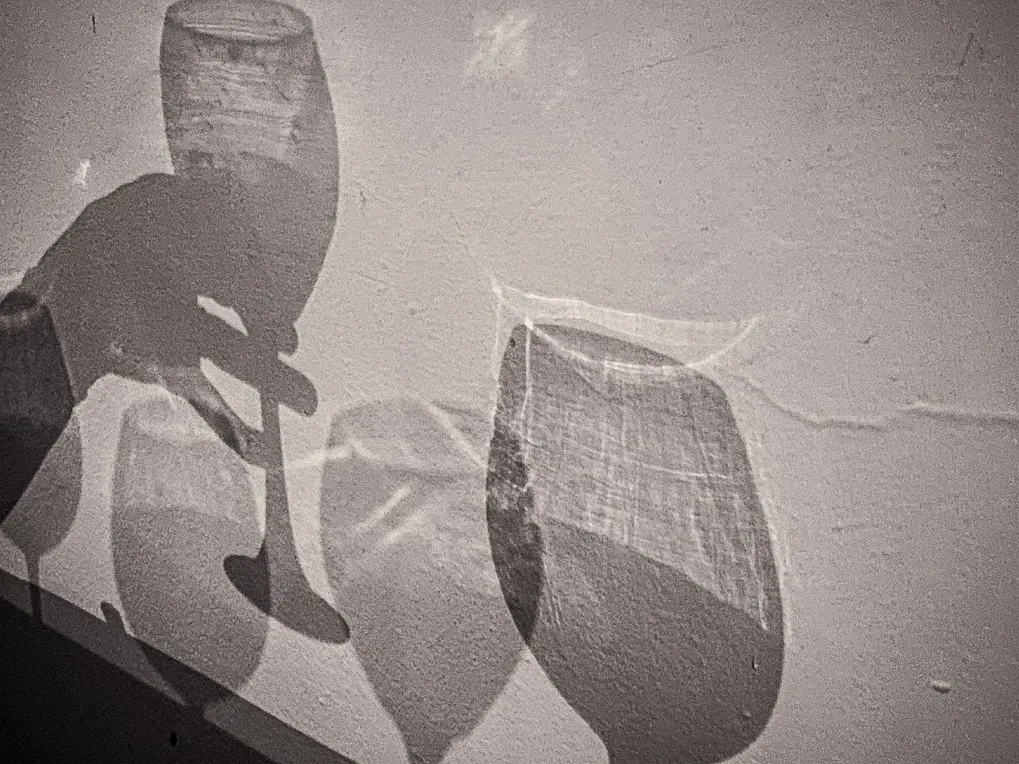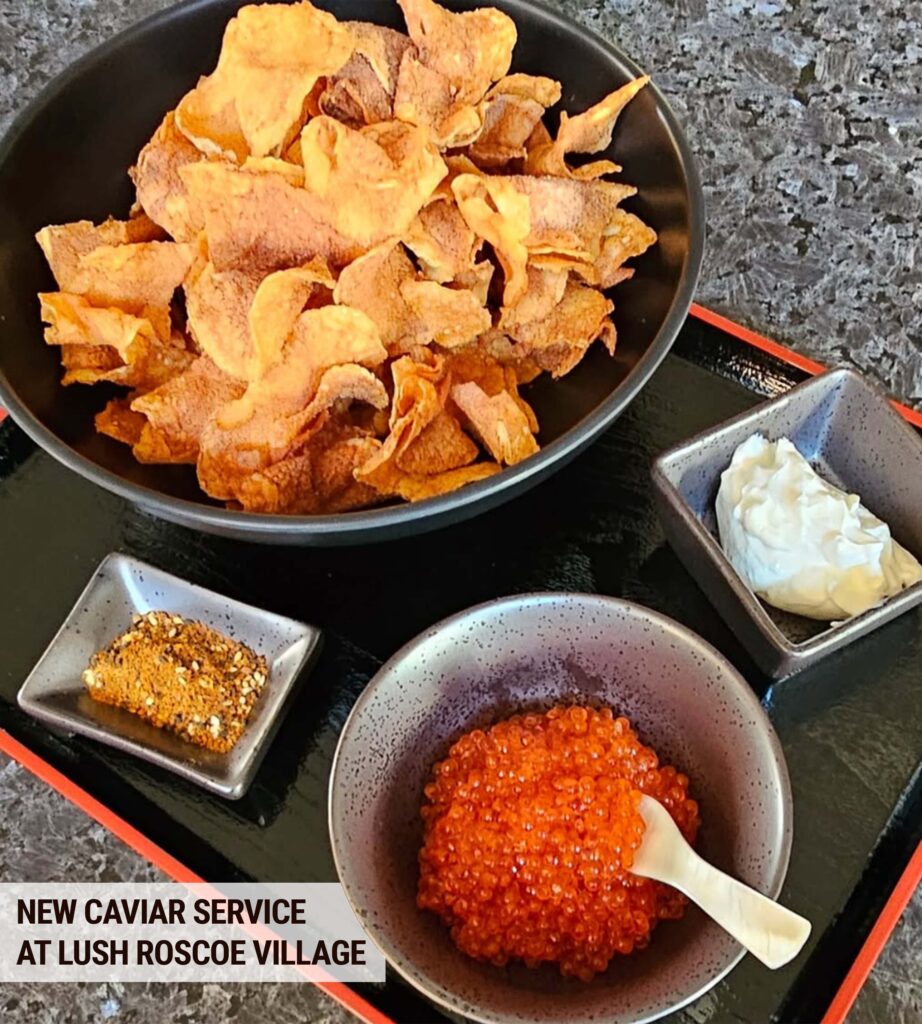By Jason Wilson (originally published on Broken Palate on Sept. 7, 2022)
In a “post-critic” world, reviews have only become more monetized. Do publications care about readers or scores?
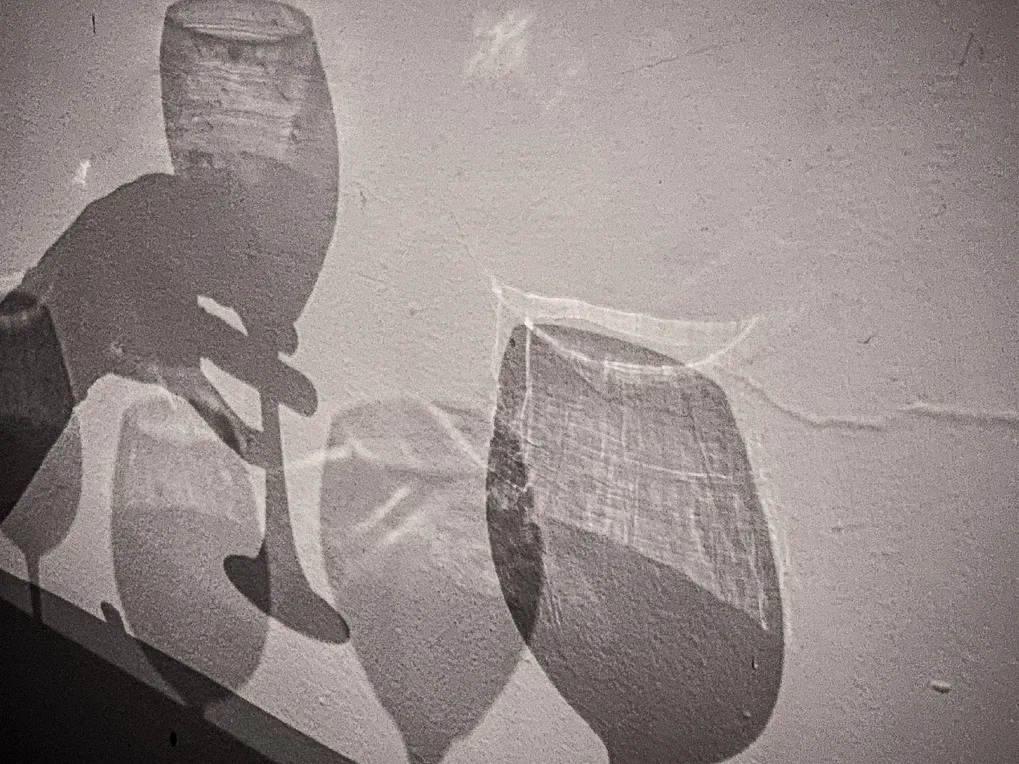
During a phone conversation last week, the president of a major public relations agency, one with a client list that includes wine regions, big brands, and importers, told me that his firm pays “about $25,000 a year” to a certain influential wine publication. This was not for advertising purposes, he said. Instead, this fee was “to ensure that our clients’ wines are reviewed” and to make sure “poorly reviewed wines aren’t listed” in critics’ tasting reports. That’s what he alleged. This “about $25,000” fee also allows the agency and its client to see reviews two days in advance of publication date, he said. He insisted that his firm is not the only one who pays this kind of fee to this publication.
In another conversation, the head of another PR firm alleged that one of their clients—a popular Italian region—was told by a different wine magazine that its wines would not be reviewed unless they made advertising buys. Just let that sink in: an entire region’s wines would be redlined if they didn’t advertise! Yet a third major wine magazine, the same person told me, enforced a cap on a limited number of wines they would review from a certain German-speaking nation—simply because that country’s wine marketing board did not pay to advertise.
I’ve written for two of the three publications mentioned in these conversations, and this made me recall another chat I’d had, several years ago, with a founder: This person told me his publication would begin reviewing the wines of a certain South American nation (which they had never covered before) only because the wine marketing organization of that country had paid them a significant sum of money to hire a critic to review those wines.
Head of a big drinks PR firm, w brand & region clients, just told me his firm pays $25k/year to an influential wine magazine. I asked why; he said “to ensure our clients’ wines are reviewed” & “poorly reviewed wines aren’t listed”-in case anyone wonders how wine criticism goes
— Jason Wilson (@boozecolumnist) September 1, 2022
I won’t say that these conversations “shocked” me. In wine media, there’s always vague chatter about “pay to play” and about the gray areas of wine criticism. When I tweeted about this last week, much of the reaction was a roll of the eyes, or sarcastic replies of “breaking news!” or invoking the classic scene in Casablanca, when Captain Renault shuts down Rick’s Cafe, exclaiming: “I’m shocked, SHOCKED to find that gambling is going on in here!” But I also received sincere responses (both publicly and privately) from people in the industry talking about their experiences.
I got a pretty good score (94) on one of my Syrahs a while back from one of these magazines And also got asked to pay so it would get featured. I didn’t pay and the score was never printed-
— Jesse Skiles (@FaussePisteVin) September 2, 2022
Sadly this is throughout our industry, it is why my sisters and I have not submitted because we don’t have $$$$$ to afford the “pay to play”. We want you to like our wines not because of the “pay to play” to be in a magazine or critic report. Sadly many struggle until rated
— Mondavi Sisters (@MondaviSisters) September 4, 2022
While I was not shocked, all of this information did make me take a step back and reflect on my own brief stint as a freelance wine critic, one who reviewed and rated wines and spirits on the 100-point scale. The role of the wine critic is one about which I’m personally conflicted. On the one hand, there’s a been a high-profile, two-decades-plus pushback against critics who score wines (such as the famed Robert Parker) from within the industry. I certainly gave my own voice to this pushback, and even wrote a book that one might call “anti critic.”
At the same time, many everyday consumers still buy wines based on critics’ scores; most distributors and major retailers pay careful attention to them, stocking what’s scoring well. I know a lot of my colleagues in wine like to pretend otherwise. But to not accept that many consumers are still guided by scores is to deny reality.
Despite whatever public reservations I’d expressed, I was paid small freelance commissions by Vinous, an influential wine publication, to taste and review hundreds of wines and spirits. Over a few years, I covered Loire Valley, Finger Lakes, Cognac, Armagnac, and Calvados. My scores and tasting notes have been used on those little shelf talkers in retail shops to sell wines. Vinous and I parted ways due to what I would file under “creative differences”—quite simply, I didn’t like writing for them, and the feeling was mutual. I’ve been puzzling through all of this—unsuccessfully—for the two years since I stopped being a wine critic.
Ultimately, wine critics don’t have a very good reputation among the general public. In pop culture, there’s a well-established caricature of the wine critic as a grifter—a middle-aged snob who’s wined and dined at fancy restaurants and Italian villas, and whose opinion is possibly for sale. Surely, wine critics can be insufferable, decadent, and corrupt—just like the rest of society. But this caricature isn’t totally accurate in 2022. The real grift in wine media is way more subtle, systemic, and far-reaching.
As you may have noted, I haven’t “named names” above in recounting my off-the-record conversations of the last week. That sort of reporting will take more legwork to ascertain (please contact me if you’re an importer or winery). For now, I am using that context to relate my own experience as a wine critic and how it meets up with industry practices. The rest of this piece is an autopsy of how things happened with me and my wine reviewing. It reaches no definitive conclusions. I am only laying out some facts and asking questions. I hope it encourages everyone who cares about wine to ask questions, as well.
A case study
Since you are the reader of a chaotic, self-published newsletter, this is likely obvious to you, but please allow me to say it: It’s very challenging to make a profit in wine and spirits media these days. The state of wine publishing, of course, is no different than the rest of print media—which, as most are aware, is a bloodbath. Not a week goes by without reports of well-known publications shuttering, or scaling back from print to digital-only, or laying off most of their staff, or transitioning to cheap, brainless SEO content. By now, it’s such old news that it barely registers. In wine media, the most recent bad news was that wine-search platform Pix shut down its editorial site, The Drop, and laid off its most of its staff. Which, I guess, means there is one less outlet from which the growing ranks of freelance writers can scavenge for scraps.
Meanwhile, in the rest of drinks media that’s hanging by a thread, we’re all in desperate search of a model that works. While it makes me vaguely nauseous to beg readers to “upgrade to paid!” every week, I’d like to keep my writing independent—ideally, without the minefield of compromises that advertisers or corporate sponsors would require me to navigate. I realize, in 2022, that worrying about “selling out” is a quaint, crusty Gen X notion, but here we are.
This not to say I am a saint or a monk in an ivory tower, allergic to money. I like money as much as anyone else. In the years between when I left my Washington Post column and the pandemic, I wrote sponsored content on a couple of occasions, led a couple of “masterclasses” paid for by wine regions, and I’ve spoken at a few conferences. In fact, in 2015, I stepped away from journalism for a year to work for Inama, a winery run by a wonderfully crazy family that makes Soave Classico and also red wines in the Colli Berici. (As I wrote about last year.) What was my actual job for the Inamas? Hard to say. In a loose sense, I was the family’s “brand ambassador.” I organized some media dinners. I did some copywriting. I helped them navigate the draconian state liquor monopoly of Pennsylvania. I did a ride-along with their distributor’s sales team. I mentored their youngest son on the American wine market as he transitioned from being a DJ to the family business. During that experience, I discovered that I am absolutely terrible at wine sales and marketing. So I went back to journalism.
When I am reporting articles, I try my best to pay my own way, and to—if not avoid them completely—keep potential conflicts-of-interest to an absolute minimum. In fact, most of the publications I write for demand it.
Therefore, I recently allowed myself to imagine what Everyday Drinking would look like with advertising or sponsored content. Why not, I thought? After all, both the New Yorker and New York Times have brand studios doing advertorials! I started looking closely at the bigger publications in this topic area—Wine Spectator, Wine Enthusiast, Vinous, Wine Advocate, and others. Given the media crisis, how are they all able to keep their publications afloat and remain, by all appearances, successful and profitable.
That’s when I began speaking with a few public relations firms about what a sponsored content deal might look like with their clients. These ideas for sponsored content have been dismissed rather quickly. There was talk of “deliverables” and “controllable outcomes” and “demographics” and “social media reach” but the long and short of it can be translated as “no fucking way are our clients going to sponsor Everyday Drinking.” Which is all fine. I doubt my readers are going to miss a smarmy advertorial edition about the “exciting wines of Region X…brought to you by…Region X.”
It was in one of these conversations that I learned about the PR firm that is allegedly paying “about $25,000” per year to the major wine publication “to ensure that our clients’ wines are reviewed” and to make sure “poorly reviewed wines aren’t listed” in critics’ tasting reports. In fact, this guy was actually unhappy about paying that money, claiming his clients weren’t getting enough value for what was spent.
After I hung up the phone, I was overcome with a sudden realization—and then a little bit of a meltdown. Some sketchy dots in my own experience were vaguely beginning to connect.
A 93 or a 95? I mean…Who can really say?
My last reports for Vinous, published in July 2020, were on Loire cabernet francand Loire chenin blanc. I traveled to the Loire right before the pandemic shutdown (I was in Chinon on the night Wuhan was locked down). Over two weeks, I visited more than 40 producers in Touraine and Anjou, tasting hundreds of wines. These tastings were supplemented by several others at importers’ offices in New York (where hundreds more wines were tasted). I was paid a little over $3,000 for each report by Vinous, out of which I had to pay my own travel expenses, meals, etc.
Between the disruption of the pandemic and some petty editorial bickering over the reports, it was early summer before they were finished. One point of bickering was over natural wine (I had wanted to highlight Loire as a natural wine center; they seemed to have a basic anti-natural-wine bias). Another point of bickering was how underpaid my work for them was. In any case, once those two reports were published, Vinous and I were finished with one another. For me, this was nothing new—editor-writer relationships come and go.
Then, just a little over two months after my original reports ran, Vinous published a very odd report by its founder, Antonio Galloni, entitled “Vinous Lockdown Special.” In this, Galloni writes, “I thought it would be fun to do something different, to write an article on regions and estates I don’t usually cover and that have been missing from our pages.”
In the report, Galloni covered 28 seemingly random wineries from Burgundy, Alsace, Austria, Beaujolais—and Loire. In fact, about a half-dozen of the producers were ones I had already covered in my cabernet franc and chenin blanc reports only weeks prior. Many of the exact same wines had been re-reviewed. In some cases, a newer vintage was reviewed, mostly with a higher score. In numerous other cases, the exact same vintage was re-reviewed and awarded a higher score, by two or three or even five points. Now, when you click on the wines from my Vinous reports, you find both Galloni’s and my original scores together (as you see in the photos below; I’ve included four examples; I have more screenshots).
Something felt strange. I looked more deeply at the half-dozen producers of cabernet franc and chenin blanc Galloni had re-reviewed—famous estates such as Huet, Pallus, Bel Air, Chidaine, and others—it suddenly hit me: All those producers were represented by the same importer: Polaner Selections.
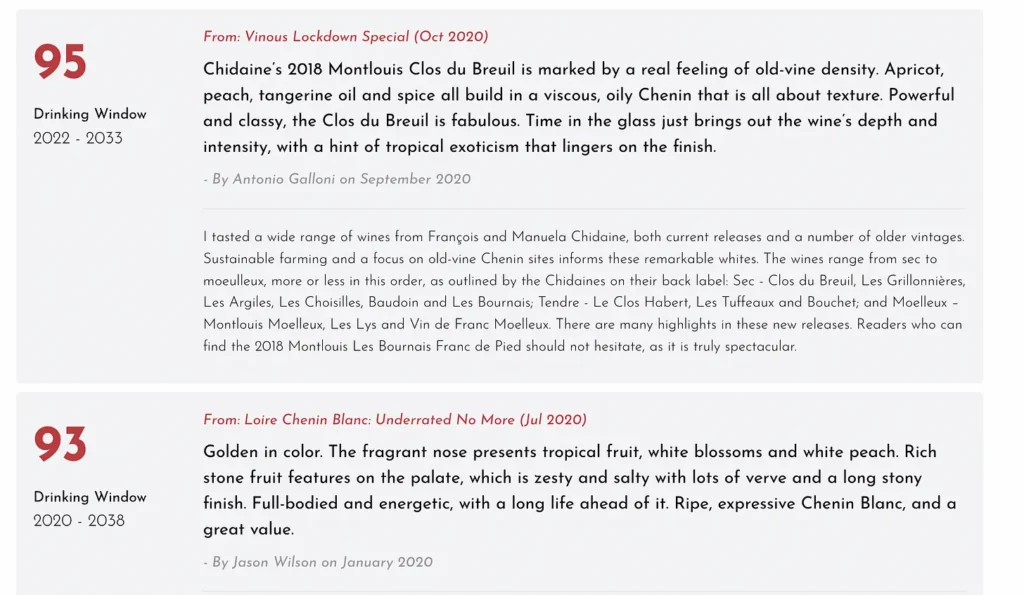
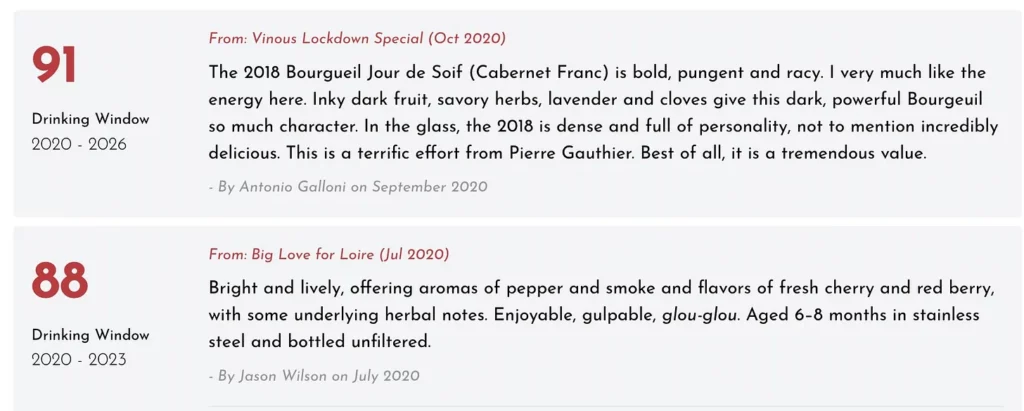
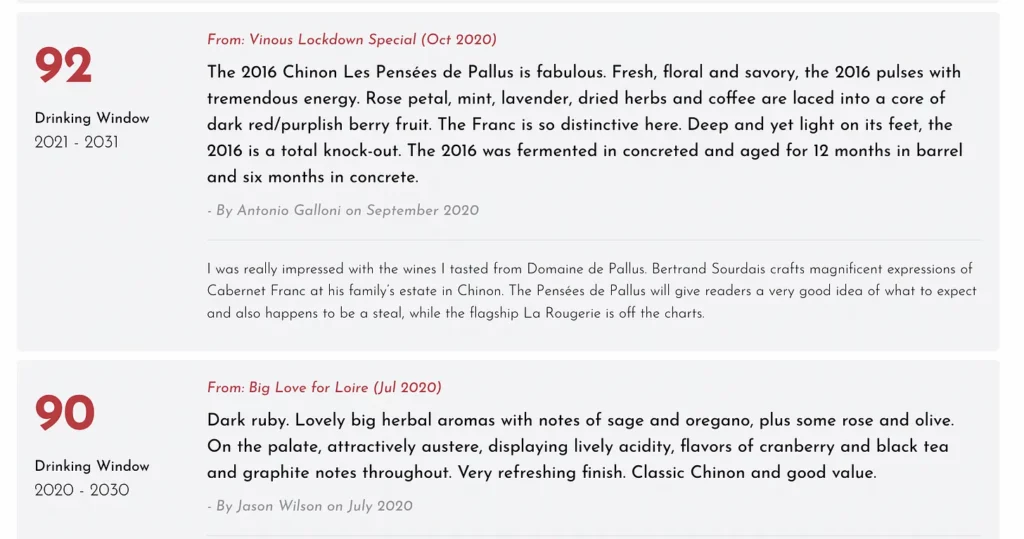
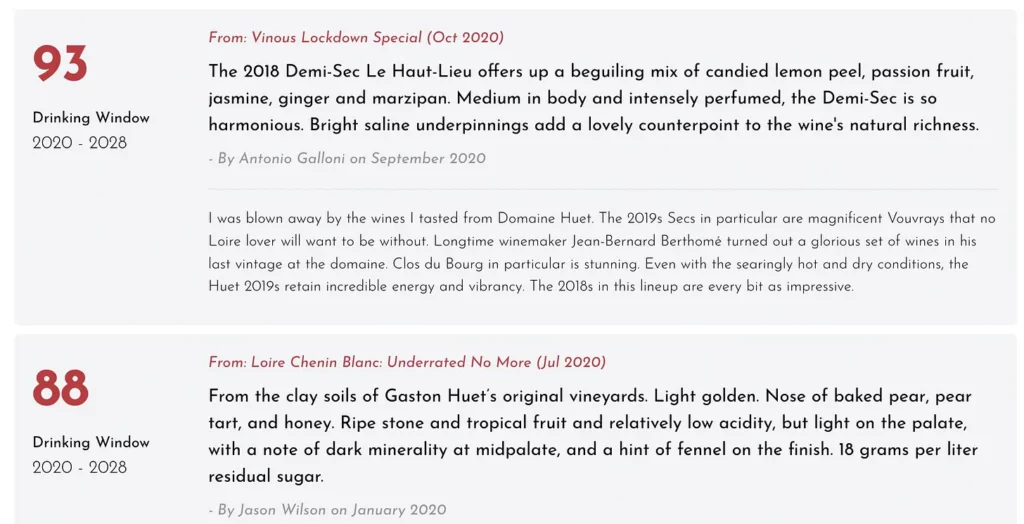
This whole re-reviewing of Loire wines imported by Polaner Selections nagged at me for a long time afterward. At first, I was offended, and reacted like the insufferable wine critic—how dare Galloni question my palate! But as time passed, I started to wonder if there was more at play.
Then, in late 2021, a colleague forwarded me a note that Vinous had apparently sent out to importers and others in the industry, about a new subscription package, called “Vinous Preview” (image below). By paying for Vinous Preview, industry insiders get the ability “to view Vinous reviews and scores approximately 48 hours before these note appear,” live access to Vinous’ editorial calendar, and the “ability to submit your wines for review outside of the normal time frames established by the Editorial Calendar.” A fourth benefit is also suggested: “Custom, bespoke options available.” While it was never confirmed, on Vinous’ reader chat forum people were saying that Vinous Preview was priced at $2,000 per month, or $24,000 per year (ie. “about $25,000”).
In the years I’d been a critic for Vinous, I’d never seen nor heard anything about any sort of deal or “custom, bespoke options” for industry insiders. My job was to travel to Loire and New York and taste wines and write about them. This would have been well above my pay grade (again, a little over $3,000 for an entire report). I never knew that anyone, except for the editors, would have had a 48-hour preview of my tasting notes and scores. I had—and still have—so many questions.
Could Galloni’s re-review of those producers from Polaner Selections have been one of these available “custom, bespoke options”? I have no idea. I may never know for sure.
I’d be curious to hear from any other industry people who know about these sorts of things. I’ve heard some chatter within the industry about another legacy magazine’s publishing team attempting to change its critics scores. Some critics, like Jeb Dunnuck, have already weighed in. I have no idea what’s true or not, and that alone is a big problem for wine media.
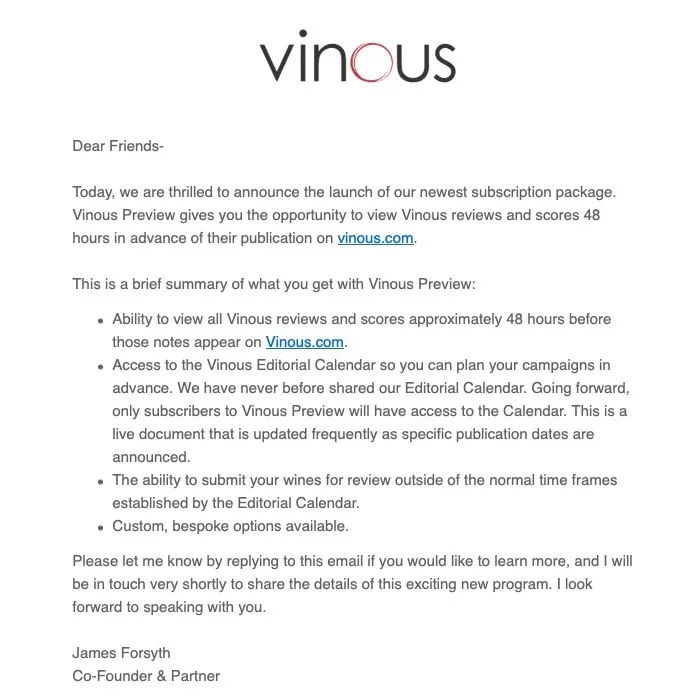
My rising scores are but small examples in a sea of chatter and rumor about the how wine media is broken. Perhaps it gives us some idea of what questions to ask. Perhaps not. Chief among my questions: How much is an extra two or three or five points added to a critic’s score worth? In any case, this all sucks for the dwindling number of wine writers who do not offer “custom, bespoke options.”
On Vinous’s own reader forum, there was a vocal backlash against Vinous Preview (I pay $140 for a subscription so I can access this). “You are helping the wine trade to maximize their profits by adjusting wine prices before the reviews are visible for the other paying customers; this will all be at the expense of the end customer,” wrote one angry reader. “So you are basically picking the wine trade over your end customer.”
Another wrote: “I’m shocked and very disappointed in you that you are even considering such an anti-consumer program. To my dismay, my previously very positive perception of you as an advocate for the consumer first and foremost has been altered. Vinous Preview will be a betrayal of your consumer subscriber.”
Famed German winemaker Klaus Peter Keller even weighed in, saying, “I do not want to know in advance. Also not a fan of publishing scores for part of the community in advance.”
Galloni did have a response to his angry readers in April 2021, claiming his publication works “under one basic premise. And that is that subscriptions must be priced according to the utility various users derive.” (You can read it if you want to pay $140).
All of this suggests that a lot of wine media and many in the wine industry don’t have much respect for the consumers who pay to read their publications. Maybe, back in Robert Parker’s heyday, in the 1980s and 1990s, you could say that wine magazines were reader-supported consumer advocates. That doesn’t seem to be the case anymore. Follow the money. Scores drive distributors and retailers to stock the selections you’ll end up buying at your local store. Scores are more important than readers.
How does that make you feel as a reader? If you subscribe to one of these publications, do you like that this is how they see you, that you matter less than scores in this equation? How does it make you feel as a wine buyer who shops at stores that use these scores on their shelves. Do you feel empowered with choice and information? Or the opposite?
I know I say it every week. But independent drinks journalism matters.


